Shimba Hills National Reserve
Shimba Hills National Reserve is a serene and scenic wildlife reserve located in Kenya’s coastal region, about 33 kilometers southwest of Mombasa. Covering approximately 192 square kilometers, it is one of the last remaining coastal rainforests in East Africa and is renowned for its rich biodiversity, rolling hills, tropical forests, and diverse wildlife. Shimba Hills offers visitors a unique combination of coastal and highland ecosystems, providing stunning views of the Indian Ocean and nearby savannahs.
Geography and Landscape
The landscape of Shimba Hills is characterized by lush rainforests, grasslands, steep valleys, and rolling hills. The area is part of the Eastern Arc Mountains, an ancient mountain range known for its high levels of endemism. The hills rise to an altitude of about 450 meters, providing cool and refreshing temperatures compared to the hot coastal plains. The reserve features:
- Dense Tropical Rainforest: Shimba Hills is covered by tropical rainforests that serve as a refuge for a variety of wildlife and plant species, some of which are endemic to the area.
- Grasslands: Open grassy plains can be found between patches of forest, providing grazing areas for herbivores.
- Waterfalls: The Sheldrick Falls, a 25-meter waterfall cascading into a pool, is one of the park’s key attractions. Visitors can take a guided hike through the forest to reach this stunning natural feature.
- Panoramic Views: The hills offer spectacular views of the surrounding coastal region and, on clear days, the Indian Ocean in the distance.
Wildlife
Shimba Hills National Reserve is home to a wide variety of wildlife, with a particular emphasis on its rare and endangered species. Some of the most notable animals found in the reserve include:
- Sable Antelope: Shimba Hills is famous for its population of sable antelope, one of the few places in Kenya where this rare and beautiful antelope can be seen. The reserve is home to Kenya’s largest population of these striking animals, which are distinguished by their long, curved horns and glossy black coats in males.
- Elephants: African elephants are a common sight in the reserve. The elephants here are known for their unique behavior of moving between the forested hills and the coastal plains in search of food and water. Their presence is critical to the ecosystem as they help shape the landscape by creating clearings and dispersing seeds.
- Giraffes, Buffaloes, and Zebras: The open grasslands of the reserve are home to herds of Maasai giraffes, Cape buffaloes, and zebras. These herbivores coexist with other species like warthogs and various antelopes.
- Leopards: Although elusive and rarely seen, leopards inhabit the reserve and use the dense forests as cover for hunting.
- Bushbucks and Waterbucks: Shimba Hills is also home to smaller antelope species, including bushbucks and waterbucks, which thrive in the forested areas and along water sources.
Birdlife
Shimba Hills is a birdwatcher’s paradise, with more than 230 bird species recorded in the reserve. The combination of forest, grassland, and water habitats supports a rich diversity of birdlife, including several rare and endemic species. Notable birds include:
- African Hawk Eagles
- African Green Pigeons
- Fish Eagles
- Ostriches
- Crowned Eagles, which can often be seen soaring above the forest canopy in search of prey.
Flora and Vegetation
Shimba Hills National Reserve is one of the richest areas for plant biodiversity in Kenya. The reserve contains over 500 plant species, many of which are endemic or rare, including orchids, cycads, and other unique flora. The cool, moist conditions in the forest create a haven for plant life, and the reserve is also home to the largest concentration of cycads in Eastern Africa, a plant species that has existed for millions of years.
Key Attractions and Activities
Sheldrick Falls: One of the most popular attractions in Shimba Hills, the Sheldrick Falls offers a refreshing break from game viewing. The waterfall cascades into a clear pool, where visitors can take a dip or relax by the water. The hike to the falls takes about 2 hours and offers scenic views of the surrounding forest.
Sable Antelope Viewing: The rare sable antelope is the star attraction of Shimba Hills. Visitors can go on game drives to spot these majestic animals grazing in the grasslands. The males, with their striking black coats and long horns, are especially impressive.
Guided Nature Walks: Unlike many other wildlife reserves in Kenya, Shimba Hills allows for guided nature walks. These walks provide a more intimate experience of the forest, offering the chance to explore the flora, observe birds, and spot smaller wildlife that might be missed on a game drive.
Picnic Spots: The park has several scenic picnic sites where visitors can relax and enjoy the tranquility of the reserve. These spots often offer stunning views of the surrounding landscape and the distant Indian Ocean.
Birdwatching: With its rich birdlife, Shimba Hills is a fantastic destination for birdwatchers. Visitors can explore the reserve’s varied habitats in search of colorful and rare bird species.
Cultural Visits: The Mijikenda people, who live in the surrounding area, have a rich cultural heritage. Visitors can arrange cultural tours to learn about the Mijikenda’s traditional way of life, their sacred Kaya forests, and their unique customs and crafts.
Conservation and Environmental Challenges
Shimba Hills National Reserve plays a critical role in protecting the coastal forest ecosystem and its unique species, particularly the sable antelope and endemic plants. However, the reserve faces several environmental challenges, including:
- Human-Wildlife Conflict: The proximity of the reserve to local communities has led to conflicts between wildlife (especially elephants) and humans, as animals sometimes raid crops or damage property.
- Poaching: Although not as prevalent as in some other regions, poaching remains a threat to the wildlife in Shimba Hills, particularly for the valuable ivory of elephants.
- Deforestation: Encroachment and illegal logging pose threats to the forested areas of the reserve, which are critical for maintaining biodiversity and supporting wildlife.
Best Time to Visit
Shimba Hills National Reserve is a year-round destination, but the best time to visit is during the dry season from June to October and January to February. During these months, wildlife is easier to spot as animals congregate around water sources, and the weather is ideal for hiking and game drives. The wet season, from March to May and November to December, brings lush vegetation and is a great time for birdwatching, though some roads and trails may be more challenging to navigate.
Accessibility
Shimba Hills National Reserve is easily accessible from Mombasa and the coastal towns of Diani and Ukunda, making it an ideal day trip for visitors staying along the Kenyan coast. The drive from Mombasa takes about 1.5 to 2 hours, and the roads leading to the reserve are generally in good condition. There are several lodges and campsites in and around the reserve, offering a range of accommodation options for those wishing to stay overnight.
Accommodation
There are a variety of accommodation options in and around Shimba Hills National Reserve, catering to different budgets and preferences. Some notable options include:
- Shimba Hills Lodge: A unique tree lodge located in the heart of the reserve, offering a serene and immersive experience in the forest. The lodge overlooks a waterhole, where wildlife frequently comes to drink.
- Kutazama Lodge: A luxury eco-lodge located on the outskirts of the reserve, offering stunning views of the Shimba Hills and the Indian Ocean.
- Various Campsites: There are several campsites within the reserve for visitors looking to enjoy a more rustic and adventurous experience.
Conclusion
Shimba Hills National Reserve is a hidden gem in Kenya’s coastal region, offering a peaceful and uncrowded alternative to the more famous national parks. Its rich biodiversity, rare sable antelopes, scenic landscapes, and proximity to the coast make it an ideal destination for nature lovers, birdwatchers, and those seeking a tranquil escape from the hustle and bustle of Mombasa. Whether you’re hiking to Sheldrick Falls, spotting elephants in the rainforest, or marveling at the striking beauty of the sable antelope, Shimba Hills provides an unforgettable experience of Kenya’s coastal wilderness.
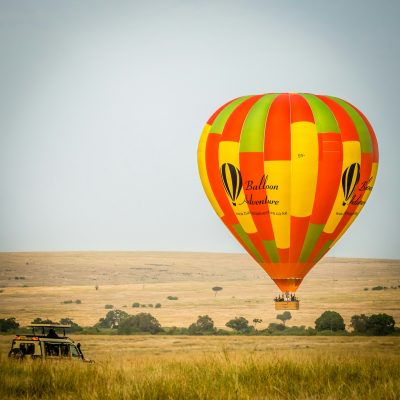
Masai Mara
Best known for yearly Wildebeest migration, big cats and lots of wildlife
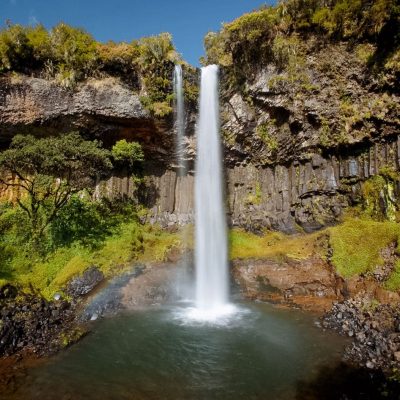
Aberdare
A picturesque protected area in the central highlands of Kenya
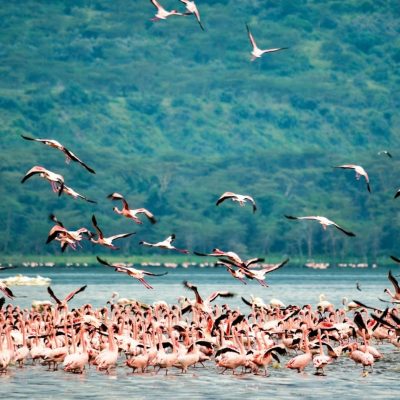
Lake Nakuru
a unique combination of rich biodiversity, stunning scenery, birdlife and wildlife
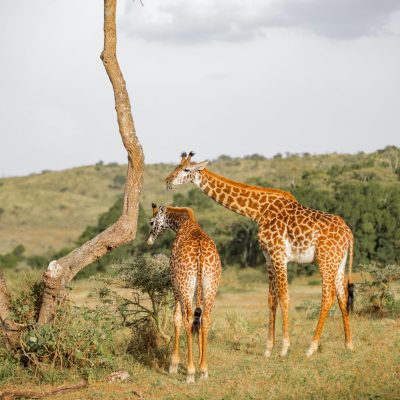
Samburu
A rugged, remote wildlife sanctuary located in the northern part of Kenya
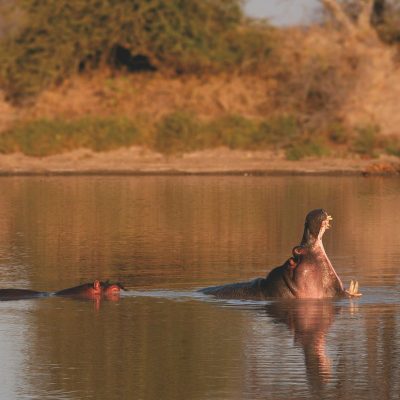
Tsavo West
One of Kenya's largest and most diverse parks in the southeastern part of Kenya